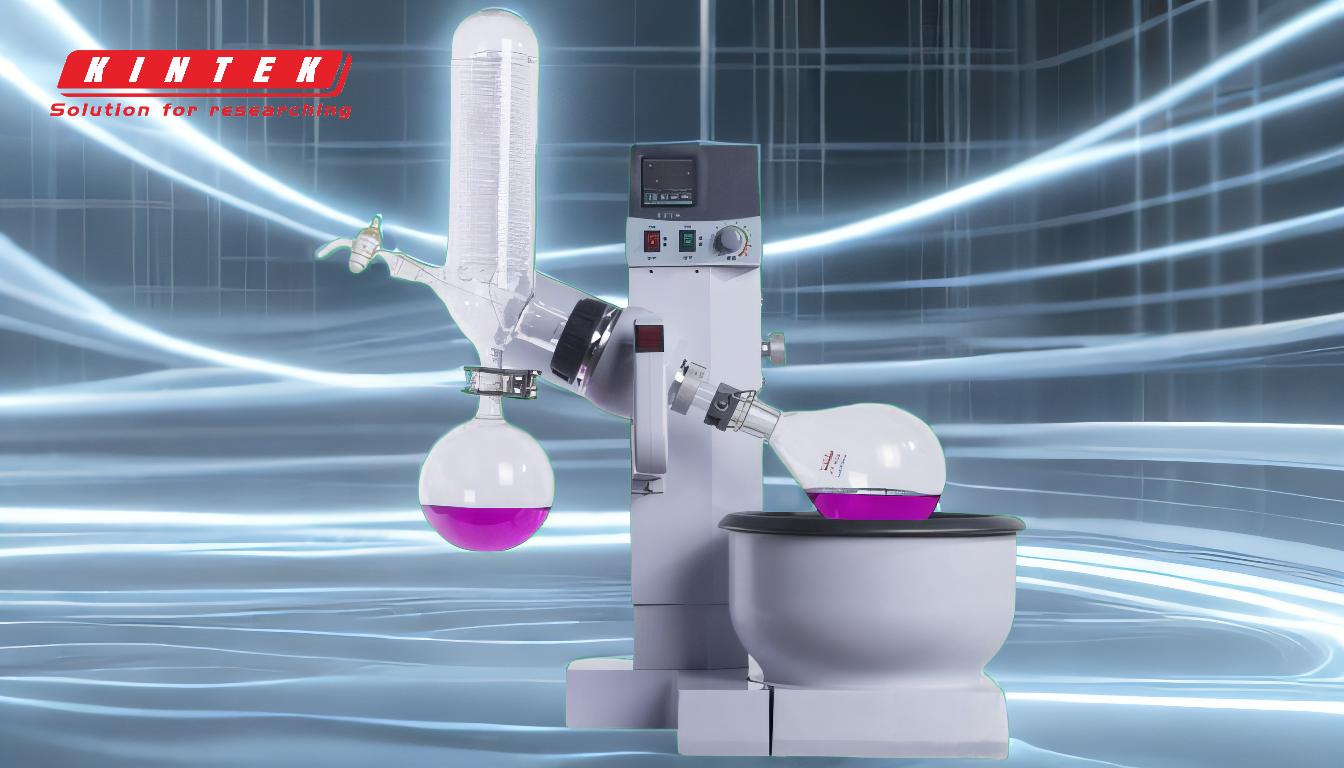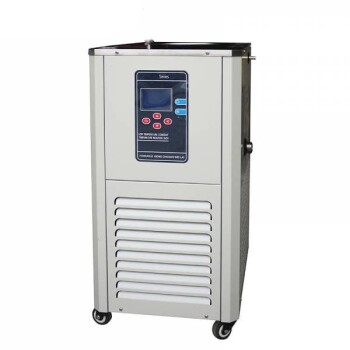The temperature setting for a rotary evaporator depends on the solvent being evaporated, the desired speed of distillation, and the need to avoid thermal decomposition or bumping. Generally, temperatures between 25°C and 50°C are suitable for most common lab solvents. Lower temperatures reduce the risk of bumping and thermal degradation but may slow the process. Tools like manometers and distillation nomographs can help optimize settings. The water bath temperature is typically set between 30-40°C for water-based solvents, while ethanol vapor temperatures should be maintained at 15-20°C. Higher temperatures (e.g., 60°C) can speed up distillation but may pose safety and cleaning challenges.
Key Points Explained:

-
General Temperature Range for Rotary Evaporation:
- Most common lab solvents require temperatures between 25°C and 50°C for efficient rotary evaporation.
- This range balances distillation speed with safety and solvent integrity.
- Lower temperatures (e.g., 25°C) reduce the risk of bumping (sudden boiling) and thermal decomposition but may slow the process.
-
Water Bath Temperature:
- The water bath is typically set between 30-40°C for water-based solvents.
- For ethanol, the vapor temperature should be maintained at 15-20°C to prevent thermal degradation.
- Water baths with a range from room temperature +5°C to 95°C are available, offering flexibility for different solvents.
-
Higher Temperatures for Faster Distillation:
- A common setting for the heating pot is 60°C, which can speed up distillation.
- However, higher temperatures may increase safety risks (e.g., solvent flammability) and cleaning challenges, especially when using silicone oil as the heating medium.
- To mitigate risks, lowering the vacuum value is recommended to improve distillation efficiency without excessive heat.
-
Importance of Vacuum Control:
- A low-vacuum pump (or sink aspirator) is sufficient for most solvents.
- Proper vacuum control, combined with moderate temperatures, helps prevent bumping and ensures smooth distillation.
- Tools like manometers and distillation nomographs can assist in optimizing vacuum and temperature settings.
-
Solvent-Specific Considerations:
- Each solvent has a unique boiling point and thermal stability profile.
- For example, ethanol requires lower vapor temperatures (15-20°C) to avoid degradation, while other solvents may tolerate higher temperatures.
- Always refer to the solvent’s safety data sheet (SDS) and standard operating procedures (SOPs) for specific guidance.
-
Balancing Speed and Safety:
- While higher temperatures (e.g., 50-60°C) can expedite distillation, they should be used cautiously to avoid:
- Thermal decomposition of heat-sensitive compounds.
- Increased risk of bumping.
- Potential safety hazards, especially with flammable solvents.
- Lower temperatures (e.g., 25-30°C) are safer and more suitable for delicate or volatile compounds.
- While higher temperatures (e.g., 50-60°C) can expedite distillation, they should be used cautiously to avoid:
-
Practical Tools for Optimization:
- Manometers: Measure vacuum levels to ensure optimal pressure for distillation.
- Distillation Nomographs: Provide visual aids to determine the relationship between temperature, pressure, and boiling points.
- PID Temperature Control: Available in digital water baths, allowing precise temperature adjustments in 0.1°C increments.
-
Summary of Recommendations:
- For most solvents, set the water bath between 30-40°C.
- Maintain ethanol vapor temperatures at 15-20°C.
- Use temperatures up to 60°C for faster distillation, but ensure proper vacuum control and safety measures.
- Always prioritize solvent stability and safety over speed.
By understanding these key points, a rotary evaporator user can optimize temperature settings to achieve efficient and safe distillation for a wide range of solvents.
Summary Table:
| Aspect | Recommendation |
|---|---|
| General Temperature Range | 25°C - 50°C for most solvents |
| Water Bath Temperature | 30-40°C for water-based solvents; 15-20°C for ethanol vapor |
| Higher Temperatures | Up to 60°C for faster distillation, but with caution for safety and cleaning |
| Vacuum Control | Use low-vacuum pumps and tools like manometers for optimal pressure |
| Solvent-Specific Settings | Refer to SDS and SOPs for precise temperature and safety guidelines |
| Balancing Speed and Safety | Prioritize lower temperatures (25-30°C) for delicate or volatile compounds |
| Optimization Tools | Manometers, distillation nomographs, and PID temperature control for precision |
Need help optimizing your rotary evaporator settings? Contact our experts today for personalized advice!



















